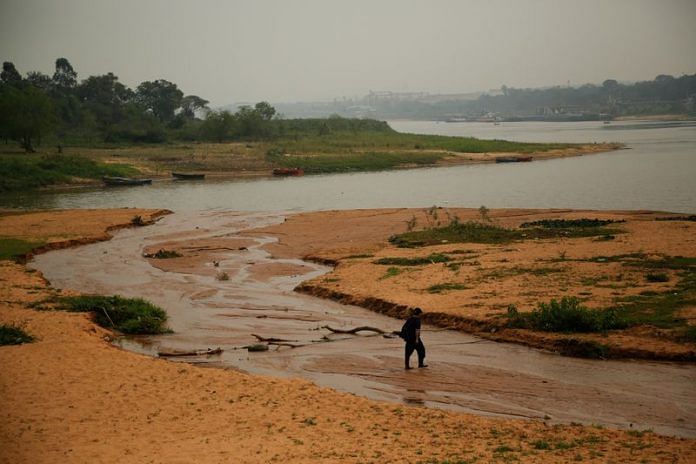By Daniela Desantis and Cesar Olmedo
VILLA OLIVA, Paraguay (Reuters) – A sharp decline in the Paraguay River, which hit a record low this month due to drought upstream in Brazil, is fueling a conflict between the country’s fishers and rice farmers over water use in a southern wetland region bordering Argentina.
Residents of the Ñeembucú department and local fishers say that water-intensive rice farms, which use river water to irrigate their crops, are aggravating already-low water levels linked to drier weather caused by climate change.
“It is very damaging. They take a lot of water and river levels get worse,” said Crescencio Almada, a fisherman for 35 years in the region, part of a wetland in the Plata basin, which regulates the flow of the Paraguay and Paraná rivers.
The drought upriver that has seen rivers dry up in the Brazilian Amazon, and the advance of farming, have altered the area’s landscape, with large tracts of land planted with rice where water or forests once stood.
However, rice farmers, and the government, say the problem is related to climate change, not irrigation.
“We’ve been working for five years in the area and we have endured cyclical moments of low water levels in the river as well as moments of large amounts of water,” said Paraguayan Rice Federation president Ignacio Heisecke.
“The river runs for 1,600 kilometers (994 miles) within Brazil and the low water level comes from upstream. The Paraguayan producer who is downstream is not to blame.”
David Fariña, director of water protection and conservation at Paraguay’s environment ministry, said the main cause of low water levels was a lack of rainfall in the river basin and the “critical” situation up-river in Brazil.
“Should we blame the current situation of the Paraguay River on the farming sector, considering that the entire Plata basin has had a rainfall deficit for around four years?” he said, adding that other regional rivers had also dropped.
“The Paraná River, the Pilcomayo River, are all in the same situation. There is no rice there.”
Paraguay grows 175,000 hectares (432,000 acres) of rice in Ñeembucú and five other departments and produces about 1.5 million metric tons of the grain. In 2023, the country exported some 900,000 tons worth $400 million, according to the federation.
The Paraguay River hit a record low on Oct. 11 at the Alberdi port before improving slightly. The national Meteorology Directorate expects the river to remain low until year-end.
Sergio Jara, another fisherman, told Reuters the river had “dropped a lot”, blaming farmers using water for irrigation, as he eyed a muddy puddle where he used to fish in Villa Oliva, about 100 km (60 miles) from Asuncion.
“Before, at least we caught a little more, now almost nothing. It’s not enough to live on, the water level has gone down a lot,” he said.
(Reporting by Daniela Desantis and Cesar Olmedo; Editing by Adam Jourdan and Rod Nickel)
Disclaimer: This report is auto generated from the Reuters news service. ThePrint holds no responsibilty for its content.



